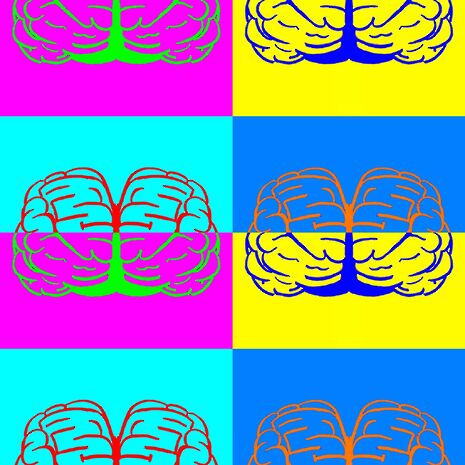Demystifying the migraine
Camille Knight writes about her experience with migraines and the lack of research into effective treatments

“Sorry I won’t be able to make it, I have a migraine.” What does this actually mean? In my case it will generally involve the day in bed in the dark, waiting for the searing pain in the side of my head to dissolve while being unable to properly use my mental faculties. On particularly bad days it can also mean extreme nausea and vomiting, as well as the fear that it will never go away.
These are the typical symptoms of a migraine without aura, caused by an inflammation of nerves and dilation of blood vessels in the head area - although nobody is yet truly able to explain the reasons why. The term migraine originates from the Greek ‘ἡμικρανία’ (hemikrania), literally meaning ‘half of the skull’ which refers to the typical presentation, where pain affects one side of the head. They can last from 4 hours to 3 days depending on the severity of the attack and can be a hereditary condition.
In the UK, it is estimated that 1 in 7 people suffer from migraines, with women being 3 times more affected than men. Surely the scale of this chronic disease should alert governments and researchers to the challenge of producing effective treatments? In reality, very little has been done towards the discovery of a potential preventative.
This lack of research comes hand in hand with a lack of awareness surrounding the disease. Misconceptions surrounding migraines are endless and accentuate the problem by invalidating the people suffering. The “sorry honey, not tonight I have a migraine” cliché has certainly not helped in legitimising the suffering of people regardless of gender, and the invisibility of migraines means they remain mostly misunderstood.
The medical term “migraine” has indeed also taken on a generic meaning to replace the headache, minimising its true significance. A migraine is not “just a headache”, it is a neurological disease with a specific set of symptoms and varying degrees of severity. Extremely debilitating, it is made worse by its lack of legitimacy within society.
The impact can be felt in relationships, families and friendships, with the occasional comment including, “Are you sure this isn’t just an excuse?”, “Is it not just in your head?” (the irony is almost comical) or “this is starting to become irritating”. The crippling feeling of being a burden compounds the original physical pain.
Patients are able to identify triggers such as certain foods or drinks, shifts in routine – as insignificant as a change in meal time – and varying emotions, such as stress or even excitement. Myths have even spread because of speculation on potential triggers. For example, my GP once described chocolate as a trigger, although this completely lacks any scientific backing.
Impossible to pin down, the triggers and their unreliability make it easy to fall into a trap of obsessiveness, with constant feelings of anxiety about when the next migraine will hit. The prospects of a full-time job, a big event or large responsibilities become nerve-racking because of the fear of an ever-looming migraine attack.
The crippling feeling of being a burden compounds the original physical pain
Despite a desperate need for a new outlook and treatment for migraines, progress throughout the last decade should not go unnoticed, and I have no doubt that perceptions will continue to evolve in a positive way in the next few years.
Anti-emetics and painkillers such as ibuprofen and aspirin, help to control nausea associated with migraines. Triptan tablets, a more recent development introduced twenty years ago, were introduced twenty years ago and have been relieving many patients ever since. Though they do nothing to prevent attacks, they can be effective in fighting the pain during a migraine episode for some people, often making it disappear in a couple of hours. They work by stimulating serotonin, popularly described as the ‘happy chemical, which acts to reduce inflammation and constrict blood vessels to stop the migraine.
Unfortunately, prevention of severe migraines in the UK is only possible through some medication developed for other diseases. Most of these, however, are accompanied by severe side effects, to the point where patients are unable to take them.
Preventative drugs specifically developed and licensed for migraines may, at last, be on their way. These work by binding to Calcitonin Gene-Related Peptide (CGRP) molecules, which research suggest are released during a migraine attack, or to their receptors. This stops a migraine developing, by preventing this signal being transmitted. Importantly, these drugs also seem to be associated with few side effects.
These drugs are already approved in the US, and may reach Europe in the next year if new funding agreements are negotiated. Currently these drugs have been ruled ‘not cost-effective’ by NICE, the departmental body which evaluates drugs in England, Wales and Northern Ireland. However, these drugs have been approved by the NHS in Scotland. This has produced another unequal healthcare situation, similar to the disparity in access to Orkambi, a life-extending drug for cystic fibrosis, across the UK until last month.
It would be a significant benefit to any economy to find a cure for these migraines. It is estimated that in the UK alone, migraines cost the NHS 150 million pounds per year, and absenteeism through migraine costs the UK 2.25 billion pounds. In a study of resource allocation to brain research areas published in the European Journal of Neuroscience, the ratio of funding to cost for migraine was the lowest of all conditions considered, at just 0.025%.
If not for the quality of life of 1 in 7 people, maybe the billions of pounds lost at the hands of the migraine will encourage governments, industries and charities to invest in the necessary research for a viable solution.
 News / SU reluctantly registers controversial women’s soc18 December 2025
News / SU reluctantly registers controversial women’s soc18 December 2025 News / CUP announces funding scheme for under-represented academics19 December 2025
News / CUP announces funding scheme for under-represented academics19 December 2025 Features / Should I stay or should I go? Cambridge students and alumni reflect on how their memories stay with them15 December 2025
Features / Should I stay or should I go? Cambridge students and alumni reflect on how their memories stay with them15 December 2025 Fashion / The art of the formal outfit 18 December 2025
Fashion / The art of the formal outfit 18 December 2025 News / Dons warn PM about Vet School closure16 December 2025
News / Dons warn PM about Vet School closure16 December 2025









